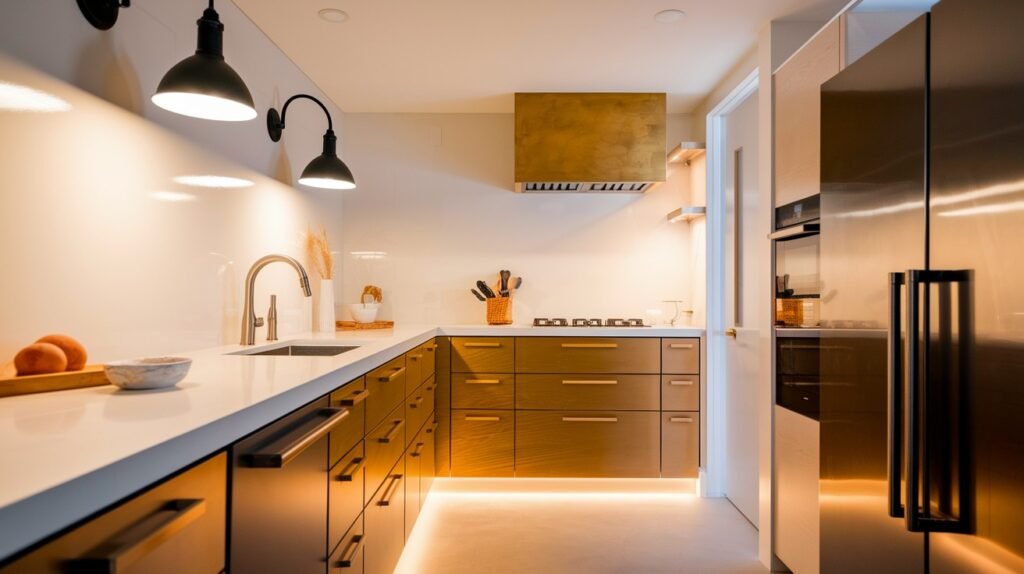Gone are the days when everything in your kitchen had to match perfectly. Mixing metals is now the smart way to create a kitchen that feels both sophisticated and lived-in.
But here’s the thing-get it wrong, and your space looks chaotic. Get it right, and you’ll have a kitchen that stops guests in their tracks.
I’ve spent years helping homeowners master this trend. I’ve seen the mistakes that make kitchens look messy. I’ve also seen the combinations that create pure magic.
This guide will teach you which metals work together and which don’t. You’ll learn how many metals you can mix without overdoing it. I’ll show you where to place each finish for maximum impact. Plus, you’ll see real examples from top designers.
You don’t need to be a designer to pull this off. You just need the right roadmap.
By the end of this article, you’ll know exactly how to mix metals like a pro. No guesswork. No expensive mistakes. Just a kitchen that feels perfectly curated.
Let’s get started.
Essential Rules for Mixing Metals Successfully
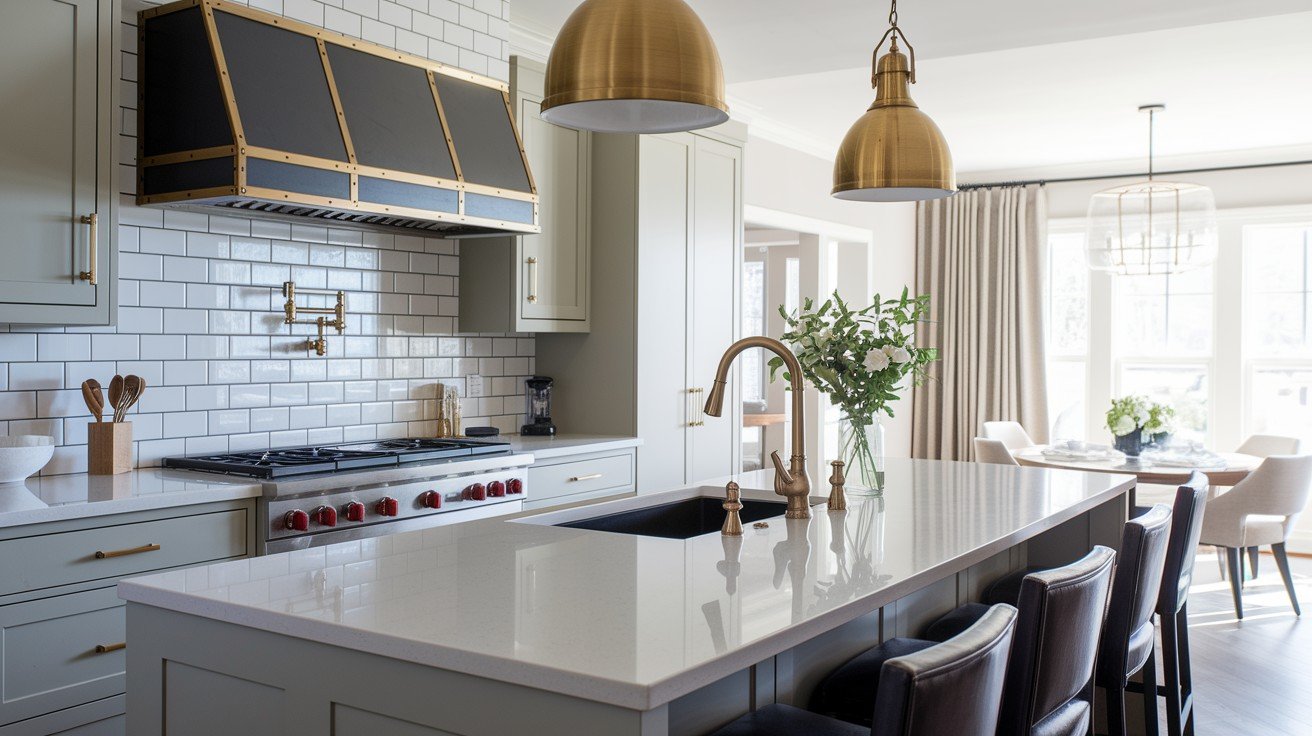
Mixing metals in your kitchen isn’t about throwing together random finishes and hoping they work. There’s a method to the madness that professional designers use to create beautiful, cohesive spaces instead of chaotic messes.
The 2-3 Metal Maximum Rule
Less is more when mixing metals. I always tell clients to stick to 2-3 metals maximum. Four or more metals make kitchens feel scattered and chaotic.
Think of it like wearing stripes, polka dots, and plaid together. Too many patterns, right? The same thing happens with metals. Successful combinations include brass faucets with black cabinet pulls or chrome plumbing with aged brass lighting.
The key is restraint. Pick your metals and stick with them.
Establishing Metal Hierarchy
Not all metals should get equal attention. One needs to be the star. I use the 60-30-10 rule: dominant metal for 60-70% of fixtures, secondary metal for 20-30%, and accent metal for 10-15%.
Choose aged brass as the dominant for cabinet pulls and pendant lights. Add a polished nickel for your faucet as a secondary. Finally, add black rods as an accent. This hierarchy prevents competition and lets each member have their role.
Organizing Metals by Function
Group metals by what they do. Plumbing fixtures like faucets and soap dispensers should match. Cabinet hardware can differ from plumbing. Lighting works in its category. Decorative elements are your wild cards.
Pro tip: Start with just plumbing and hardware if you’re nervous. Biggest mistake? Mixing metals within the same category. Don’t pair a brass faucet with a chrome soap dispenser.
Coordinating with Kitchen Elements
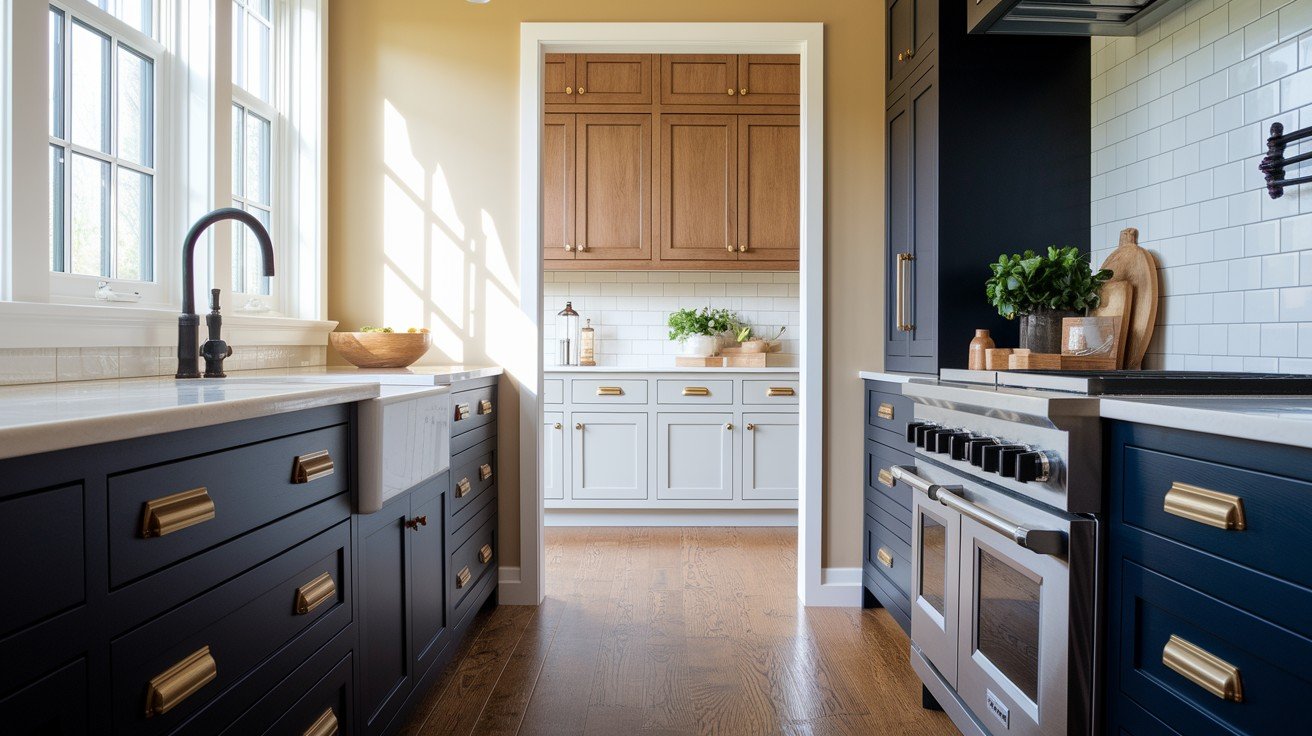
Your kitchen doesn’t exist in a vacuum-every element needs to work together harmoniously. The biggest mistake I see is homeowners choosing metals without considering their cabinets, countertops, and appliances first.
Cabinet Color Coordination
Your cabinet color is the foundation for choosing metals. Get this right, and everything else falls into place.
Dark cabinets in blue, green, or black love warm metals. Think brass drawer pulls on navy cabinets or bronze knobs on forest green doors. Why? Dark colors need warmth. Cool metals like chrome can disappear against dark cabinets.
Light cabinets in white or gray are more flexible. Chrome looks crisp and clean. Polished nickel adds subtle warmth. Brass brings richness without overwhelming. Light cabinets give you the most options for metal mixing.
Wood cabinets work with black hardware for modern contrast or brass pulls for natural warmth. Look at your cabinet’s undertones-cool gray pairs with chrome, and warm gray prefers brass.
Integrating Stainless Steel Appliances
Here’s what most people don’t realize. Stainless steel appliances count as one of your metals. Don’t ignore them when planning your mix.
Stainless steel and brushed nickel are practically twins. You can treat them as the same finish. This is huge news if you have stainless appliances and want brushed nickel fixtures.
The best metals to pair with stainless steel include brass for warm contrast, black for the modern edge, and bronze for the traditional feel. The trick is balancing temperatures. Stainless steel is cool-toned, so add warm metals to create visual interest.
Don’t fight your appliances. Work with them as part of your design instead of trying to hide them.
Specific Metal Profiles and Applications
Not all metals are created equal, and understanding their unique personalities will help you choose the right ones for your space. Each metal finish has its character, price point, and ideal applications that can make or break your kitchen design.
Chrome vs. Polished Nickel
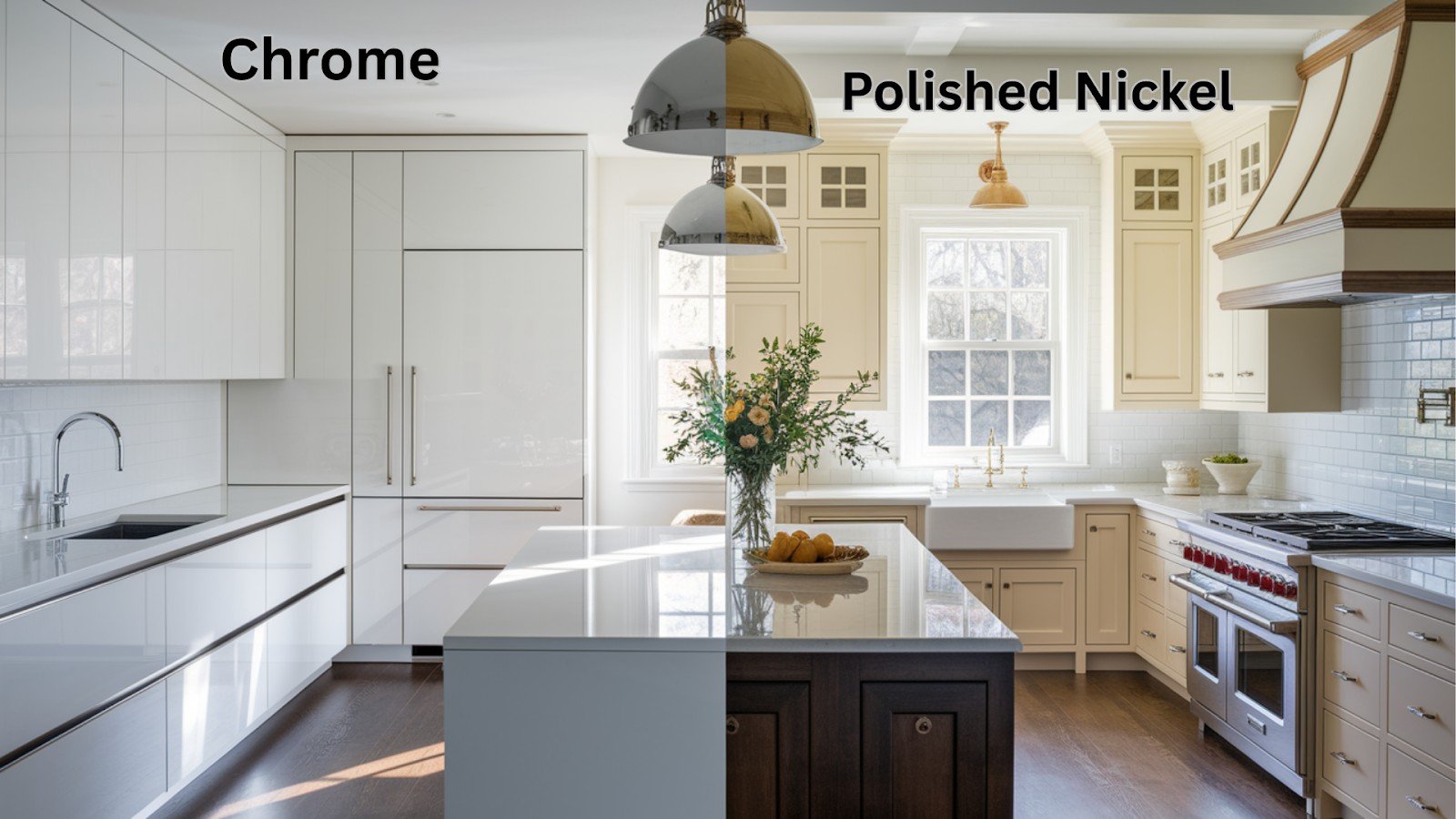
Chrome is the cool kid on the block. It’s bright, reflective, and modern. Polished nickel is its warmer cousin with golden undertones that make spaces feel cozier.
Here’s the easiest way to tell them apart. Chrome looks like a mirror. Polished nickel looks like an antique mirror with a warm glow. Polished nickel has serious historical appeal and develops a beautiful patina over time. Chrome stays the same forever.
Budget-wise, Chrome wins. It’s cheaper and easier to find. For maintenance, both are easy to clean, but polished nickel hides water spots better. Use chrome in modern kitchens with white cabinets. Choose polished nickel for traditional spaces or when you want warmth.
Brass Variations and Selection
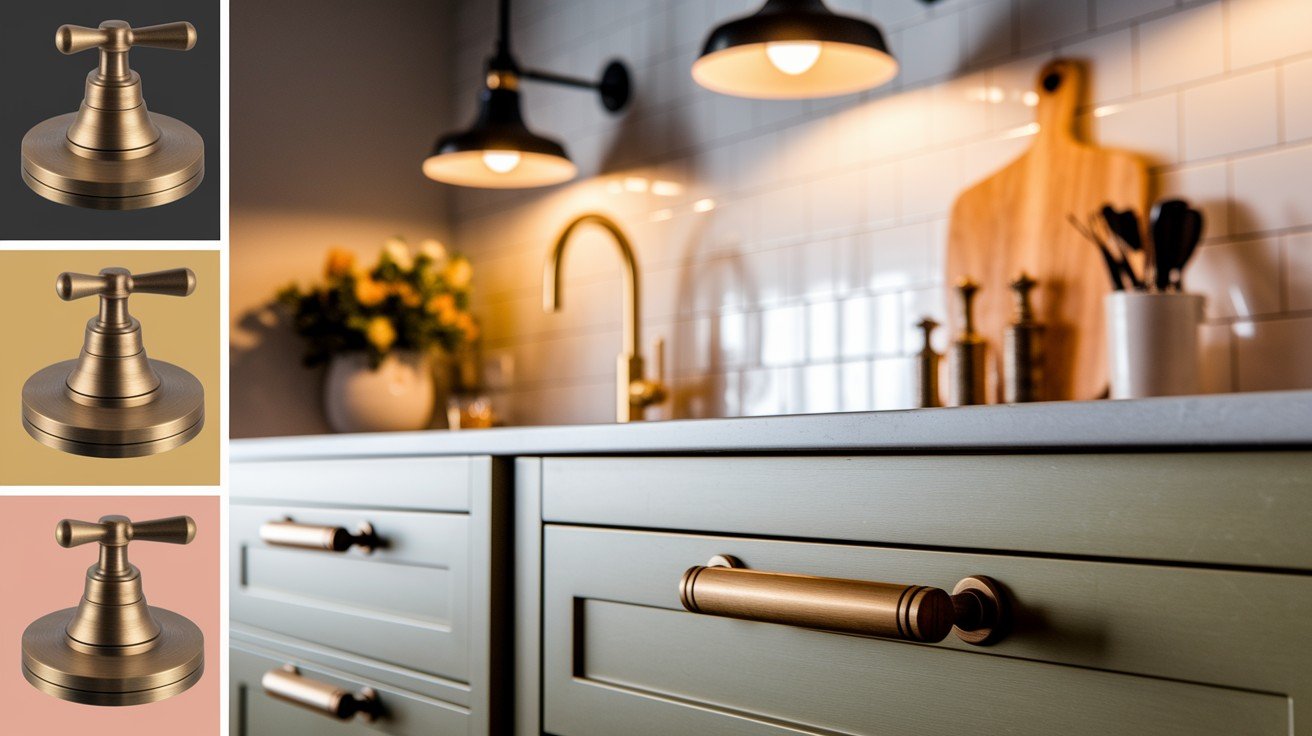
Forget shiny yellow brass. Today’s brass is about aged, matte finishes that look sophisticated. The modern trend leans toward deep golden tones instead of bright yellow.
Here’s what to avoid. Pink-cast brass looks cheap. Yellow brass screams builder-grade. Stick with warm golden or aged finishes for the best results. Quality matters with brass plumbing-cheap brass tarnishes quickly.
Shopping for brass online is tricky. Photos lie. Always order samples first or shop in person. What looks aged online might arrive bright yellow at your door.
Bronze and Black Options

Oil-rubbed bronze brings instant sophistication to traditional kitchens. It’s rich and dark with subtle highlights that feel rustic yet refined. This finish hides scratches and wears better than shinier options.
Matte black is the modern neutral that works with everything. It’s bold without overwhelming. Black hardware looks crisp against white cabinets and dramatic against dark ones.
Best applications: Bronze works for traditional sconces and farmhouse hardware. Black excels in modern pendant lights and contemporary pulls. Both finishes hide fingerprints well.
Real-World Kitchen Examples
Sometimes the best way to understand mixed metals is to see them in action. These real kitchen examples show you exactly how different styles handle metal mixing so you can steal ideas that work for your own space.
Traditional Style Applications
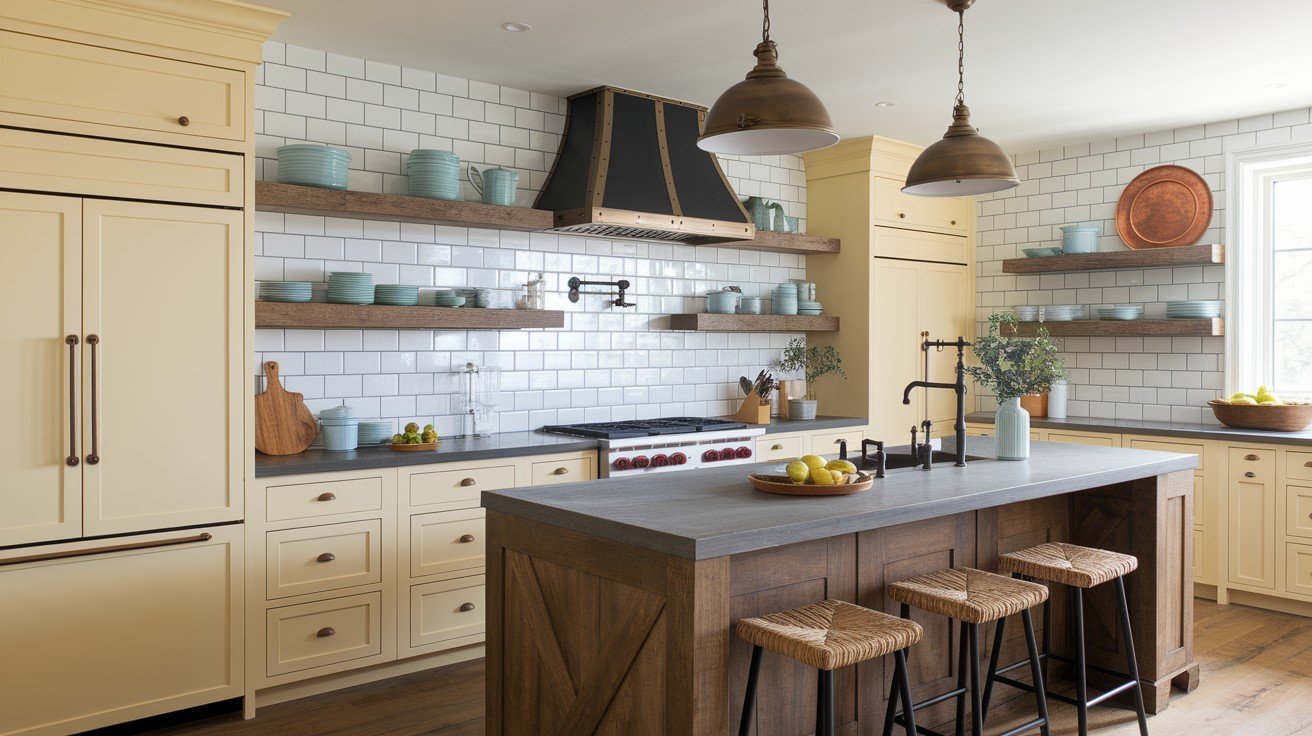
French country kitchens master mixed metals with aged brass cabinet pulls, polished nickel faucets, and oil-rubbed bronze pendant lights. Think cream cabinets with brass hardware, farmhouse sinks with nickel fixtures, and bronze sconces. This creates layers without feeling busy.
Classic white kitchens give you the most freedom. White Shaker cabinets with brass pulls, chrome faucets, and black pendant lights create timeless appeal. The white background lets each metal shine without competing.
Here’s what I love about this approach. You can change your mind later. Swap brass pulls for black ones, and your kitchen feels more modern. White cabinets are that forgiving.
European farmhouse combinations focus on warm metals with natural materials. Picture weathered wood, stone counters, aged brass hardware, and copper pot racks. Add polished nickel plumbing to balance the warmth.
Modern Kitchen Implementations
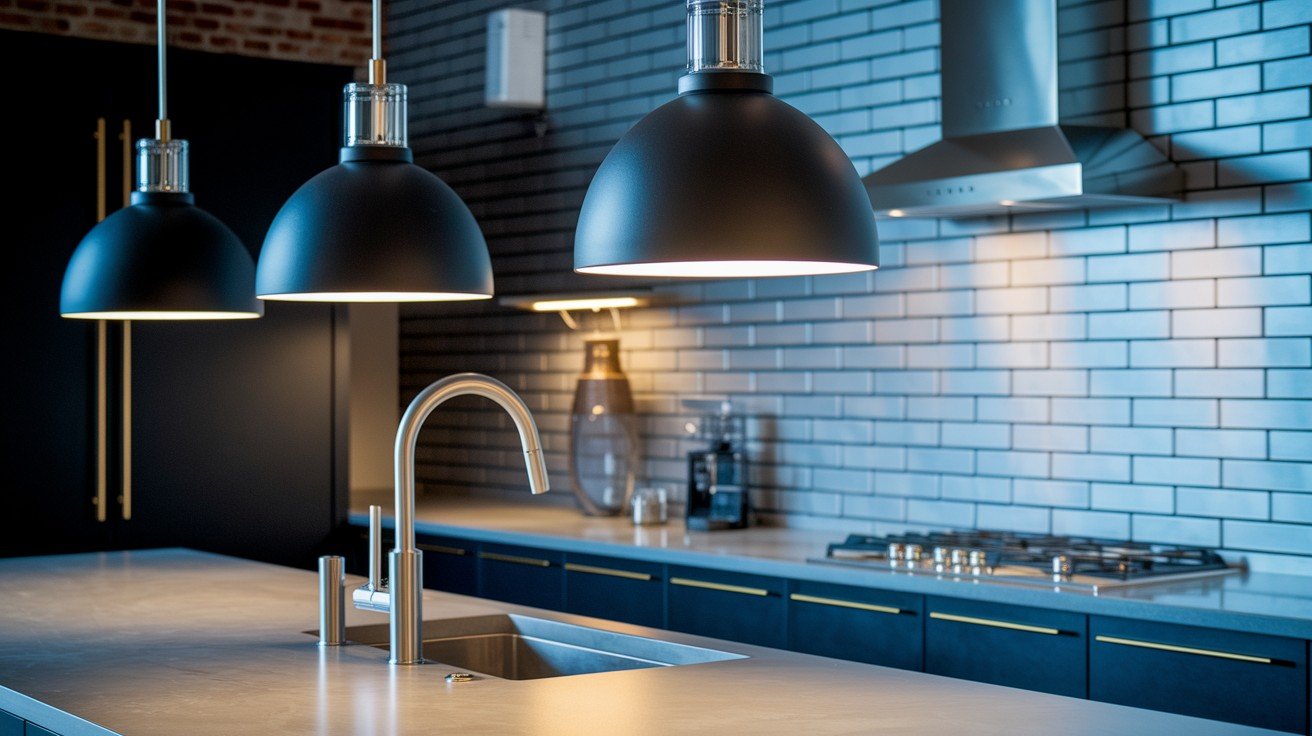
Sleek geometric fixtures demand clean metal combinations. Matte black pendant lights with chrome cabinet pulls and stainless steel appliances work beautifully. The geometry creates interest, so metals stay simple.
Industrial-inspired combinations love raw materials. Think exposed brick, concrete counters, black steel pendant lights, and brushed nickel plumbing. Add brass accents sparingly-maybe just cabinet pulls or a single sconce.
This style is all about contrast. Warm brass against cool concrete. Shiny nickel against matte black. Don’t overthink it. Industrial kitchens should feel effortless.
Minimalist approaches use just two finishes placed thoughtfully. Brass faucets with black cabinet hardware. Chroma lighting with stainless steel appliances. Less really is more in minimalist design for quiet sophistication.
Conclusion
You now have everything you need to create a stunning mixed-metal kitchen. Remember the golden rules: stick to 2-3 metals maximum, choose one dominant finish, and spread your metals throughout the space.
Start small if you’re nervous. Pick two metals you love and test them together. Most homeowners find that brass and polished nickel make a foolproof combination.
Don’t overthink it. Trust your instincts when metals feel right together. The best-mixed metal kitchens look effortless, not forced.
Your kitchen should reflect your style, not follow every trend. Use these guidelines as your foundation, then make choices that make you smile every time you walk into the room.
Ready to transform your space? Pick your first two metals and start planning your beautiful, balanced kitchen today.
Frequently Asked Questions
Can you mix chrome and brass in a kitchen?
Yes, chrome and brass work well together as they provide a nice contrast between cool and warm tones for visual interest.
How many metals can you mix in one kitchen?
Design experts recommend limiting mixed metals to 2-3 maximum to maintain visual cohesion and prevent overwhelming the space.
Should cabinet hardware match the faucet finish?
No, matching isn’t necessary anymore. Different finishes can work beautifully together when following proper mixing metal guidelines and principles.
Do stainless steel appliances count as a metal finish?
Yes, stainless steel should be considered one of your metals when planning your mix, especially with brushed nickel similarities.
What’s the difference between polished nickel and chrome?
Chrome is cooler-toned while polished nickel has warmer undertones and will develop patina over time like brass.

